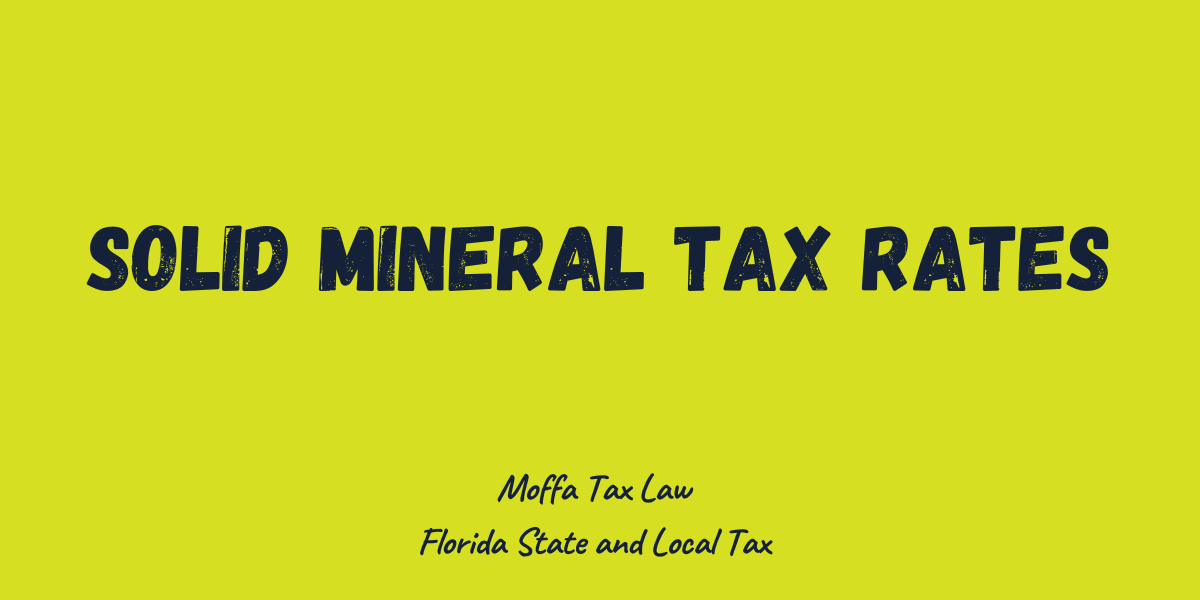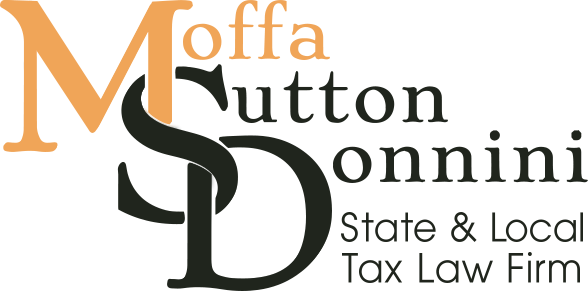NEWS & INSIGHTS


On March 5, 2025, the Florida Department of Revenue released TIP 25B07-01 confirming the solid mineral severance tax rates applicable for the 2025 calendar year. The severance tax, imposed under Chapter 211, Florida Statutes, applies to companies engaged in the commercial production of solid minerals, including phosphate rock, heavy minerals such as titanium dioxide, and other extractive resources.
While the 2025 rates remain consistent for most categories, the Department’s publication offers critical reminders for producers regarding rate calculation methods, reporting requirements, and the use of statutory guidance when market-based data is unavailable. Businesses subject to the tax—particularly those in phosphate or heavy mineral production—should ensure their estimated payments for the 2025 tax year align with the most recent figures.
For phosphate rock producers, the severance tax rate for 2025 is set at $1.61 per ton. This rate applies to production occurring between January 1 and December 31, 2025, and must be used when completing the Declaration/Installment Payment of Estimated Solid Mineral Severance Tax (Form DR-142ES). The Department has not indicated any change from prior years, making this rate consistent with recent tax cycles.
The treatment of heavy minerals, however, reflects a more nuanced issue due to data limitations in the federal Producer Price Index (PPI). Under Florida law, the severance tax rate for heavy minerals is adjusted annually based on the PPI for titanium dioxide, as published by the U.S. Bureau of Labor Statistics. However, the PPI for titanium dioxide has not been updated since February 2019. Because no current data or suitable substitute index is available that would yield consistent results, the Florida Department of Revenue is required by law to carry forward the previous year’s rate.
As a result, the 2025 tax rate for heavy minerals remains at $3.80 per ton, identical to the 2024 rate. This figure is derived using the statutory base rate of $1.34 per ton, multiplied by the base rate adjustment factor of 2.83490, as prescribed by section 211.3103, Florida Statutes. The Department’s decision to maintain the prior-year rate underscores the importance of legislative safeguards designed to prevent erratic changes when reliable pricing data is unavailable.
Producers of “other solid minerals”, a category that may include clay, sand, and various industrial materials, are subject to a tax rate that is calculated differently than the per-ton rates applied to phosphate and heavy minerals. For this category, the severance tax continues to be 8% of the taxable value of the minerals produced. There has been no change to this percentage rate for 2025. The taxable value is typically based on the fair market value of the minerals at the point of severance, less certain allowable deductions, and the Department encourages taxpayers to maintain clear records supporting valuation methods.
The consistent rates for 2025 may come as a relief for producers facing volatile market conditions and ongoing uncertainty in federal data reporting. However, the publication also highlights a longer-term issue: Florida’s reliance on outdated federal economic indices to adjust tax obligations. With the PPI for titanium dioxide apparently dormant since 2019 and no comparable index producing “reasonably consistent results,” as required by statute, the state’s ability to adjust the heavy minerals tax rate remains frozen unless and until new data becomes available.
Businesses subject to these severance taxes should ensure that they are using the correct 2025 rates when calculating and remitting their estimated payments via Form DR-142ES. Given the nuances of mineral valuation, rate calculations, and potential penalties for underpayment, affected taxpayers should consider consulting with legal or tax advisors who are experienced in Florida’s natural resource taxation rules.
The Florida Department of Revenue emphasizes that TIP 25B07-01 is intended to inform taxpayers of statutory obligations and does not, by itself, establish new rights or requirements. For more detailed guidance, producers can review Florida Statutes sections 211.30, 211.31, 211.3103, and 211.3106, which govern the imposition and administration of the severance tax. Questions may also be directed to the Department’s Taxpayer Services division.
As of this publication, there is no indication that the Florida Legislature plans to update the statutory framework governing these rates or the reliance on federal indices. However, companies in the extractive industries should remain alert to potential policy changes, especially if the data gaps in federal reporting persist. In the meantime, the Department’s 2025 guidance offers a clear framework for compliance, preserving continuity for both the state and the regulated community.
Additional Articles by the SALTy Orange at Moffa Tax Law:
NEWS & INSIGHTS Inside the FTA’s May 2025 Committee Report: What State Tax Officials Are Watching Inside the FTA’s May…
NEWS & INSIGHTS State Conformity with the BBA Partnership Audit Rules: Where Are We in 2025? State Conformity with the…
How Florida’s Sales Tax Auditors Target Convenience Stores (and What You Can Do About It)”
NEWS & INSIGHTS How Florida’s Sales Tax Auditors Target Convenience Stores (and What You Can Do About It) Florida Department…

Jeanette Moffa, Esq.
(954) 800-4138
JeanetteMoffa@MoffaTaxLaw.com
Jeanette Moffa is a Partner in the Fort Lauderdale office of Moffa, Sutton, & Donnini. She focuses her practice in Florida state and local tax. Jeanette provides SALT planning and consulting as part of her practice, addressing issues such as nexus and taxability, including exemptions, inclusions, and exclusions of transactions from the tax base. In addition, she handles tax controversy, working with state and local agencies in resolution of assessment and refund cases. She also litigates state and local tax and administrative law issues.


